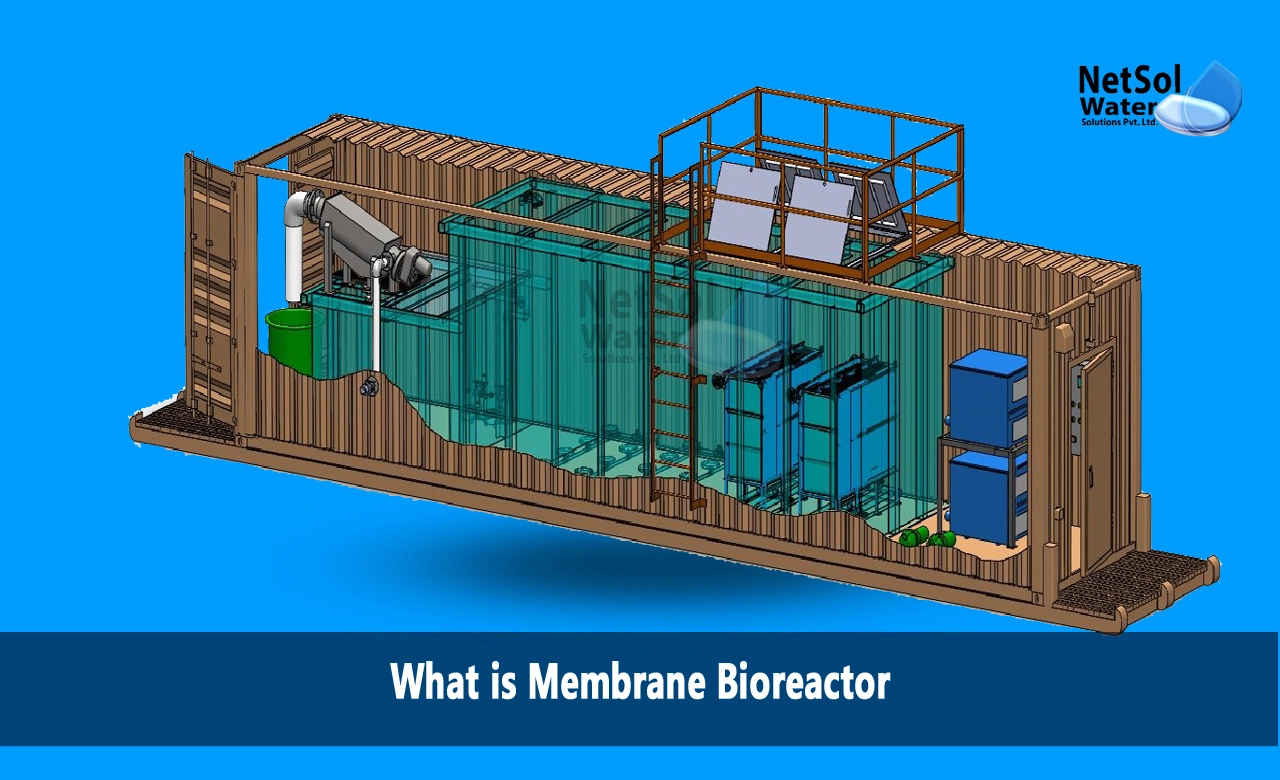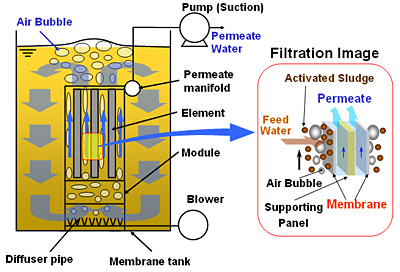The Science Behind Membrane Bioreactor: How It Works and Why It’s Effective
The Science Behind Membrane Bioreactor: How It Works and Why It’s Effective
Blog Article
How Membrane Bioreactors Are Revolutionizing Water Purification Equipments
The introduction of membrane bioreactors (MBRs) stands for a considerable improvement in the area of water filtration, combining organic therapy procedures with advanced membrane layer filtering technologies. This integration not just improves the high quality of dealt with effluent yet likewise addresses urban space constraints, making MBRs particularly appropriate for largely populated locations. As global water scarcity heightens, the function of MBRs in promoting drinkable water reuse and sustainable water administration comes to be increasingly important. Yet, the effects of this technology expand past performance-- what chances and obstacles exist in advance for its prevalent execution?
Overview of Membrane Bioreactors
Membrane bioreactors (MBRs) stand for a considerable innovation in water purification technology, as they integrate biological treatment procedures with membrane filtering. This integration boosts the effectiveness of wastewater treatment by utilizing microbes to break down organic contaminants while at the same time employing semi-permeable membrane layers to different treated water from put on hold virus and solids.
The MBR system usually is composed of a biological reactor where the microbial populace metabolizes impurities, complied with by a membrane filtration unit that preserves biomass and allows just clean water to travel through. This twin functionality leads to higher effluent quality contrasted to traditional therapy approaches. MBRs can be operated in both set and continual flow modes, providing adaptability in style and application.
Furthermore, MBRs are defined by their small footprint, making them ideal for urban settings with area constraints. Membrane Bioreactor. They also allow the healing of water for reuse, therefore adding to water sustainability campaigns. While MBR modern technology has gained popularity in municipal and commercial applications, its functional complexities and power needs necessitate mindful consideration throughout execution. On the whole, MBRs are at the leading edge of improving water treatment performance and top quality, showcasing the possibility for ingenious solutions in environmental administration.
Benefits of MBR Modern Technology
The assimilation of organic therapy with membrane layer filtering provides many benefits for water purification processes. One of the main benefits of Membrane layer Bioreactor (MBR) innovation is its capacity to effectively get rid of both natural and not natural pollutants, bring about top quality effluent. The membranes serve as a physical barrier, stopping put on hold solids and microorganisms from travelling through, which enhances the general safety and security and reliability of cured water.
Furthermore, MBR systems call for a smaller footprint compared to standard therapy methods, permitting extra efficient area use. This small layout is particularly advantageous in urban setups where land is restricted. MBRs also show functional adaptability, accommodating varying influent top qualities and flow prices without significant performance destruction.
Moreover, the process offers enhanced nutrient removal capacities, especially for nitrogen and phosphorus, which are vital for stopping eutrophication in getting waters. The minimized sludge manufacturing connected with MBR technology also equates to reduce disposal expenses, making it a cost-efficient remedy in the future - Membrane Bioreactor. Overall, the benefits of MBR modern technology placement it as a leading option for sustainable and cutting-edge water filtration systems, dealing with both environmental and economic worries
Applications in Water Purification
Applications of Membrane Bioreactor (MBR) modern technology in water purification are impactful and varied, attending to various treatment requires across numerous industries. MBRs successfully incorporate organic therapy procedures with membrane layer filtering, making them ideal for municipal wastewater therapy, commercial effluent monitoring, and also potable water reuse campaigns.
In municipal setups, MBRs are progressively utilized to improve the top quality of dealt with wastewater, permitting for conformity with strict discharge laws and promoting the recycling of water for watering and non-potable usages. Their portable style also makes them suitable for city atmospheres where room is limited.
Industrially, MBR technology is utilized to deal with procedure water and wastewater, specifically in markets such as food and drink, pharmaceuticals, and fabrics. By effectively eliminating pollutants and put on hold solids, MBRs assist markets lessen ecological influences while recuperating valuable resources from wastewater streams.
Moreover, MBRs are obtaining grip in decentralized water therapy applications, where small-scale systems can be released in remote areas or creating regions. This versatility enables communities to attain lasting water monitoring solutions, enhancing accessibility to tidy water while minimizing reliance on standard treatment approaches.
Instance Researches and Success Stories

In one more example, a fabric manufacturing center in Bangladesh took on MBR modern technology to address its wastewater challenges. The system reduced chemical oxygen demand (COD) degrees from 1,200 mg/L to less than 100 mg/L, therefore satisfying regulatory criteria and significantly reducing environmental impact.
The University of Cape Town's MBR setup has actually shown effective in dealing with greywater for non-potable reuse on school. This project not just conserves potable water however also offers as an academic design for lasting site methods.
Moreover, a seafood processing plant in Norway made use of MBR technology to deal with effluents having high degrees of organic issue, accomplishing over 90% toxin removal. These situation research studies emphasize MBR technology's convenience and its essential function in boosting water high quality throughout diverse applications.
Future of Water Treatment Solutions
As international water deficiency and contamination obstacles escalate, innovative water treatment remedies are coming to be significantly essential to guarantee lasting access to tidy water. The future of water therapy exists in the assimilation of advanced technologies that improve the effectiveness and efficiency of filtration processes. Membrane bioreactors (MBRs) go to the forefront of this advancement, integrating organic therapy with membrane filtering to generate premium effluent ideal for various applications.

Arising patterns such as source recuperation from wastewater, including nutrients and energy, will better transform treatment facilities into environment-friendly centers. Furthermore, developments in nanotechnology and membrane layer materials promise enhanced performance and long life of purification systems.

Conclusion
Their duty in safe and clean water reuse and sustainable water management dig this highlights their relevance in resolving global water scarcity difficulties. Proceeded study and growth will better enhance the efficacy and fostering of MBR technology, guaranteeing a resistant future for water treatment services.
The appearance of membrane layer bioreactors (MBRs) stands for a substantial improvement in the field of water purification, merging organic therapy procedures with advanced membrane purification innovations. As worldwide water deficiency increases, the role of MBRs in facilitating drinkable water reuse and sustainable water management becomes increasingly crucial. They additionally make it possible for the recuperation of water for reuse, hence contributing to water sustainability initiatives.As global water scarcity and pollution difficulties magnify, innovative water therapy options are coming to be progressively important to guarantee sustainable access to clean water. Their function in drinkable water reuse and sustainable water monitoring highlights their value in addressing worldwide water shortage obstacles.
Report this page